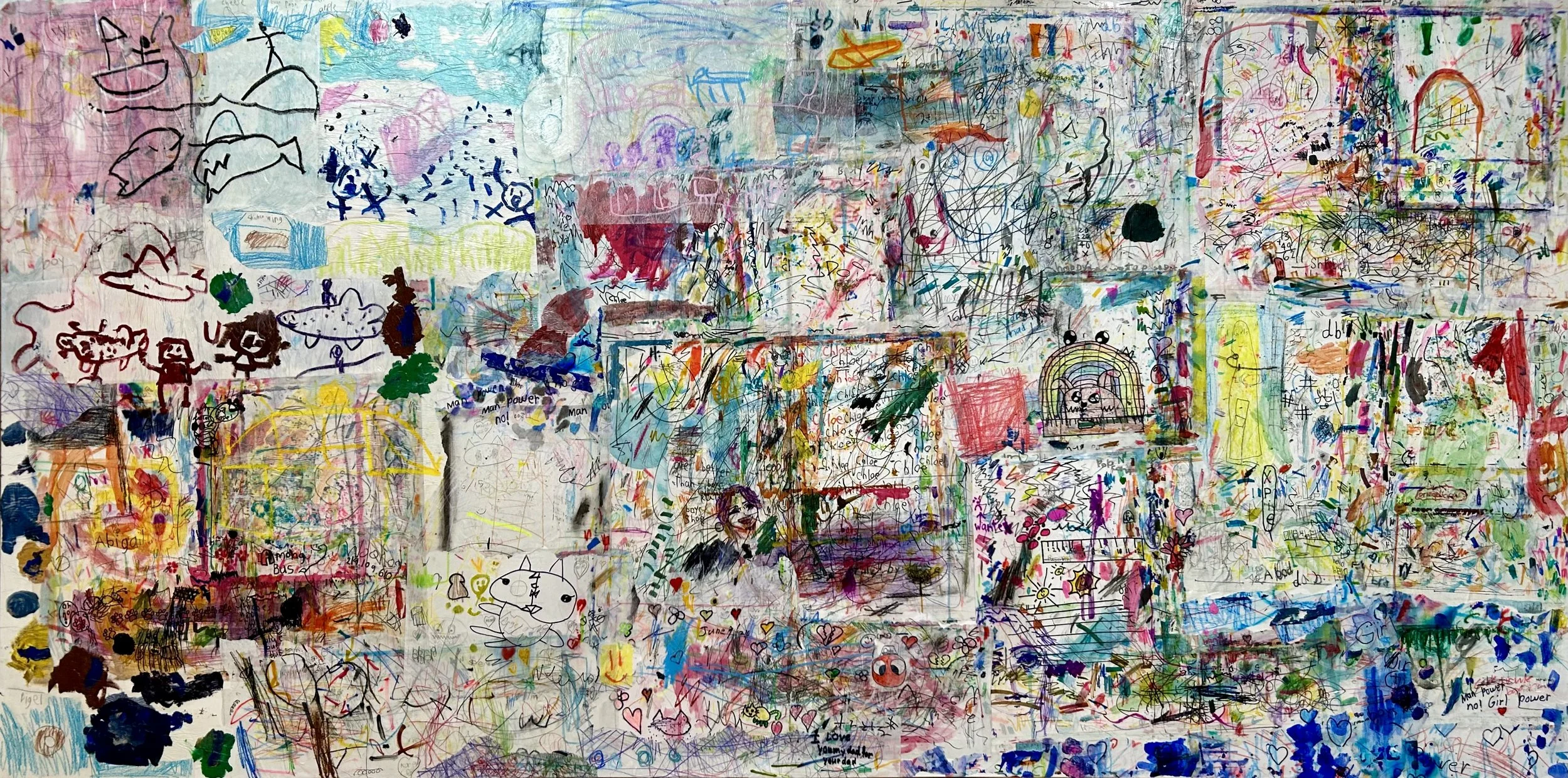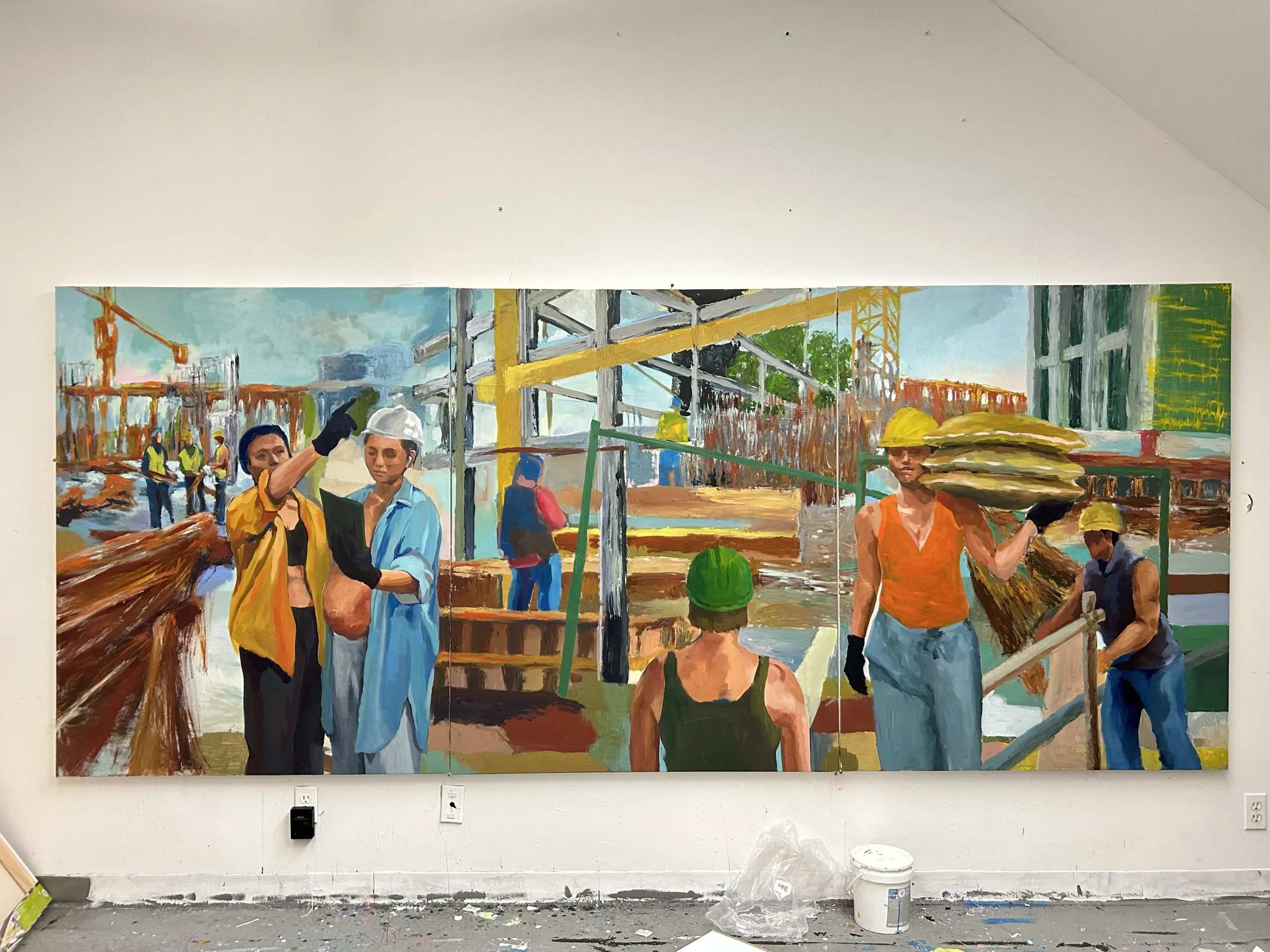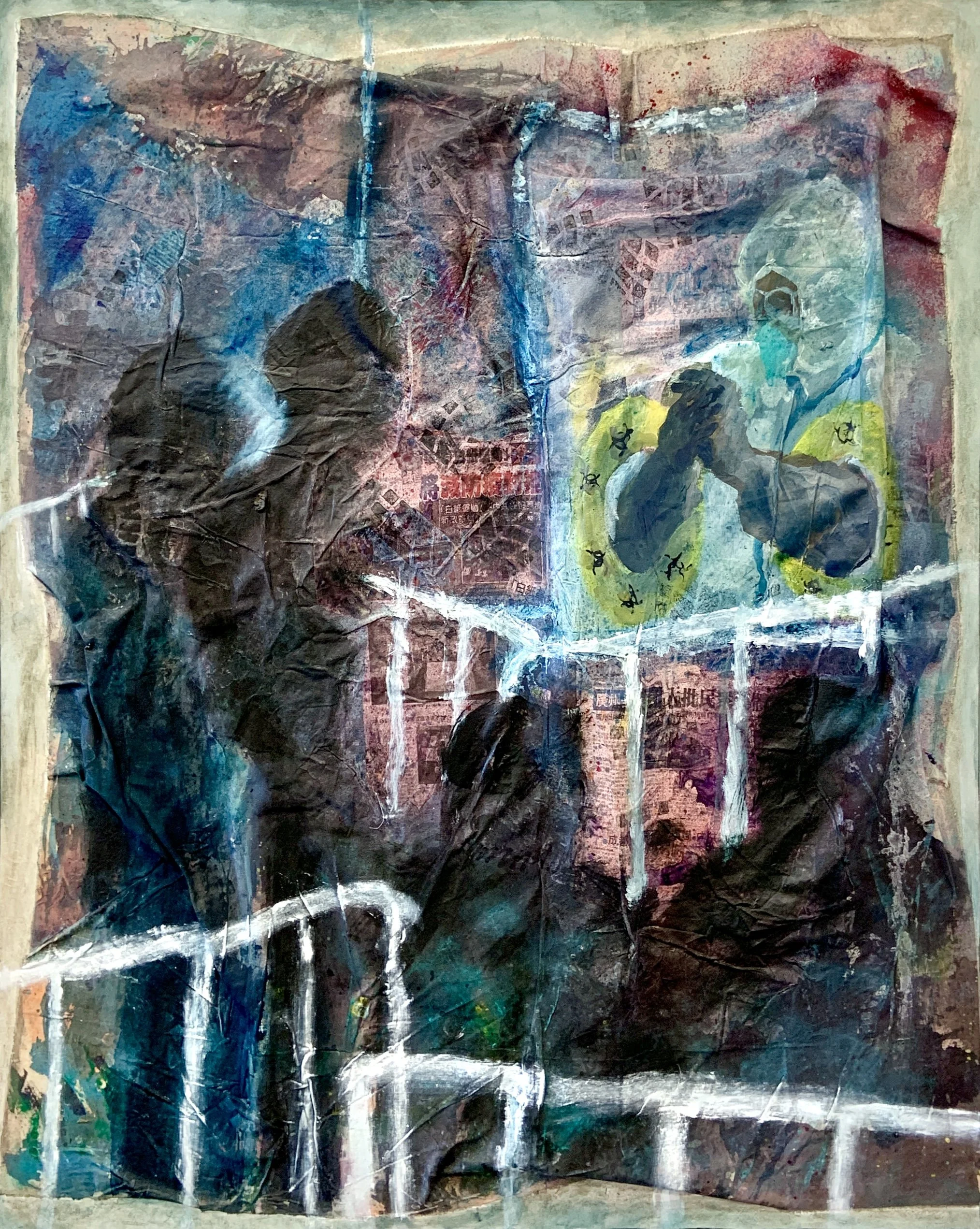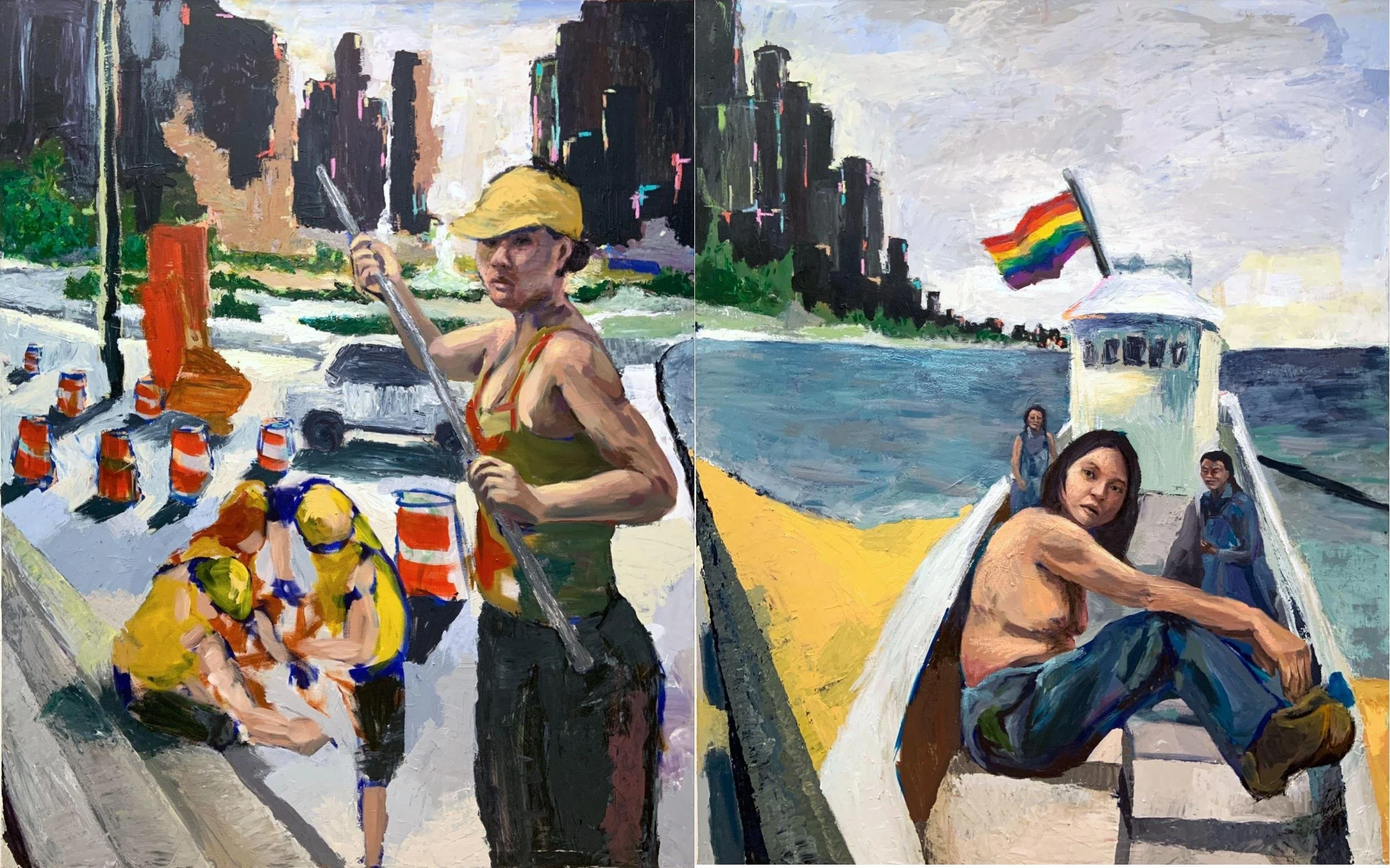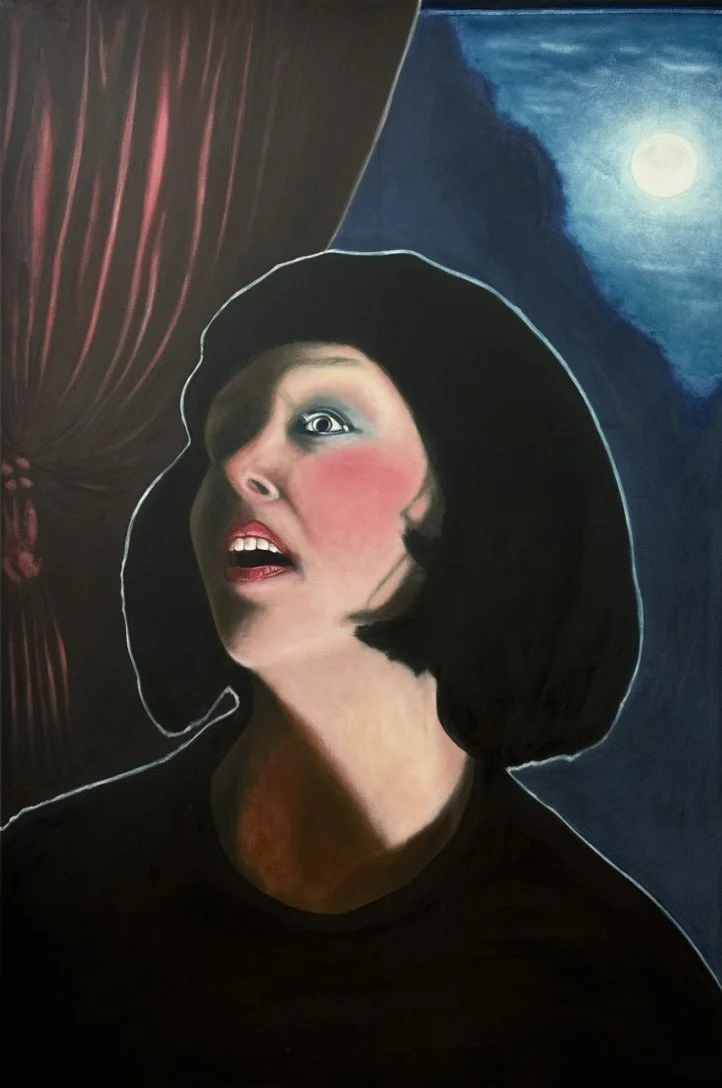Interview with Xiaorui Huang
Xiaorui Huang is a Chinese human rights social commentary artist based in New York. In 2012, she ventured to Ipswich, England, to attend St Joseph's College, where she pursued her A-levels with a major in Fine Art. After that, she moved to New York, earning her B.F.A. before obtaining her MFA from Brooklyn College of the City University of New York in 2023.
Since the spring of 2019, Huang has been involved as a supplemental painting instructor at the Borough of Manhattan Community College of CUNY. Furthermore, starting in the fall of 2023, she has taken on the role of teaching painting as an Adjunct Assistant Professor at CUNY. In early 2024, Huang became a member of the Bowery Gallery in Chelsea, NY.
Huang's artistic practice is centered around social justice issues in contemporary human rights, focusing on themes such as children with disabilities, Asian feminism, and political resistance. Her work encompasses a broad spectrum, addressing the rights of equality movements in Asian society.
Huang's work has been featured in solo exhibitions at the Walter & Joan Hobbs Art Gallery and the Art Gallery of Hewlett-Woodmere Public Library in New York. Additionally, Huang has participated in group exhibitions at notable locations, including the Shirley Fiterman Art Center in New York, NY; the Holy Art Gallery in London; Las Laguna Art Gallery, Laguna Beach, CA; Teravarna Art Gallery, California; the virtual gallery - Camelback Gallery in Arizona; Powerhouse Art, Theatre 1 Breezeway Gallery, Shirley Fiterman Art Center in New York; and the Saatchi Gallery in London.
Considering the ethical considerations inherent in representing vulnerable populations within your art, particularly concerning themes like Asian feminism and political resistance, how do you balance the dual objectives of reflecting the lived experiences of these groups while retaining your unique artistic voice and integrity?
To be honest, I did not balance all these themes objectively. I see myself as a character within my narratives, whether as the main focus or a supporting figure. This approach allows me to authentically convey the experiences and emotions that have shaped me. For instance, when exploring themes of Asian feminism, I draw from my upbringing surrounded by strong, non-stereotypical Asian women—my aunts, my mother, and my grandmother. These women defied traditional expectations; they were successful businesswomen, soldiers in the 90s, and doctors who commanded respect within the community. Yet, despite their accomplishments, as the females themselves, they often reduced themselves to 'so-and-so's wife,' overshadowing their true identities.
Similarly, my art statement on disabled children came from my family's experiences. I have two nephews, one with Harlequin-type ichthyosis and the other with autism. Both are incredibly talented and have natural gifts. However, they often feel the weight of societal judgment, even in subtle, unspoken ways. This inspired one of my collaborative performances, where we used color to represent social emotions. In this work, children, even those born with disabilities, are depicted as blank canvases. Society or people in the society, in turn, hold the brushes, shaping them with every interaction. Despite the resilience we try to instill in them, they remain sensitive and harmed by the world around them. We can never return to clean up all the colors after we paint them. We can never erase the harm we did.
I don't aim to balance or prove any political “fact” in my art. Instead, I paint my feelings, especially my anger, using canvas as a surface and mixing medium materials to translate complex emotions and experiences into a language that expresses myself.
Reflecting on the influence of your Chinese heritage, how has this cultural backdrop shaped your artistic narratives, especially when addressing complex themes such as the rights of children with disabilities and movements for equality within Asian contexts? Are there particular historical or philosophical elements from your culture that you find recurrently influencing your works?
Undoubtedly, the historical elements of my Chinese heritage recurrently influence my work. Chinese cultural contexts profoundly shape my narratives, particularly when addressing themes like Asian feminism. My experiences during 13 years of studying, living, and traveling in Western countries have fueled my passionate response to the rights of Asian women. The cultural backdrop of China is central to all my artistic statements, especially in my Asian Feminism series, where I incorporate representative Chinese male gaze symbols. My feminist practices often involve specific gender content, explicitly challenging traditional Chinese female cultural images by using semi-nude poses and referencing overtly 'masculine' performances, which symbolize male status in Chinese society.
Regarding human rights in Asia, I integrate techniques inspired by traditional Chinese painting into my work. For example, I use acrylic paint instead of traditional Chinese ink and apply it on unprimed canvas with watery paint, making the canvas more delicate. By replacing the rice paper of traditional Chinese ink painting with a Western oil canvas, I aim to break the stereotypical conventional image of Chinese art. Not all methods and forms need to adhere strictly to traditional Chinese expressions. We can evolve and improve these traditions by merging them with modern and Western art forms to create something more significant.
Through the course of your educational journey from the United Kingdom to the United States, culminating with your advanced studies in art, how have these varied academic environments contributed to the development of your philosophical outlook on art and influenced the thematic decisions you make within your creative process?
My art journey began in junior high school in China, where I first learned sketching and painting. In China, art education is highly structured, like preparing for the college entrance examination. Every student follows the same structure, comparing skills and colors while drawing or painting the same objects. The focus was on mastering techniques and templates rather than exploring personal expression. It wasn't until I studied A-levels in the UK that I began to question, 'What is art?'
Choosing Fine Art as my major at St Joseph's College introduced me to a different approach to art. Our teachers would assign a theme, and we had to learn how to develop and expand upon that theme. The process involved documenting our practice and work development, much like writing an essay. The final painting needed to clearly show our creative journey, with evidence of how we arrived at the final piece. This experience taught me that art has a source and must be explored and developed.
However, my understanding of art evolved when I came to New York to attend art school, focusing on studio art, especially painting. Immersing myself in the modern art scene of New York, I realized that I was the source of my own artwork. I began to explore my passion, questioning what drives me to create.
There are two influential mentors, Thaddeus Radell and Archie Rand, who play a significant role in shaping my artistic identity. Thaddeus Radell, in particular, guided me through my early explorations, teaching me the intricacies of painting techniques, colors, composition, pigments, and materials. He taught me how to see paintings truly. On the other hand, Archie Rand expanded my understanding of art, teaching me that art has no settled form or boundaries of technical regulations. Art is a pure creation, free from judgment. These mentors helped me grasp the depth of art and guided me toward finding my voice within it.
Over time, how has your method and approach to creating art evolved, especially in relation to the social justice themes you frequently explore? Could you discuss a particular moment or artwork in your career that signifies a crucial transformation or development in your style or thematic focus?
My artistic journey has consistently revolved around themes of feminism before 2022 because this is the emotional core of what I want to express. A significant turning point in my artwork occurred in December 2022, following the tragic incident in Urumqi, China, during the Zero-COVID policy lockdown. The lockdown prevented firefighters from rescuing people, resulting in ten deaths and nine serious injuries. This event sparked protests across China and beyond, deeply angered me. I felt an overwhelming need to channel my emotions, so I describe painting as a language for me—a way to express my feelings and my sense of fairness.
As someone who is not American and uses three languages daily and as a college instructor, I’ve often felt a barrier in expressing emotions through speaking language, even though with birth languages. While these languages are natural to me, they sometimes fall short when conveying deeper emotions, particularly in social settings. Painting, however, is a medium where I experience no such barriers; it allows me to express my feelings freely.
In response to the Urumqi incident, I allowed my emotions to guide my creative process, abandoning the traditional painting methods I had relied on. I painted directly on unprocessed canvas without a drawing board, then tore the canvas and pasted it onto the board. At that moment, my emotions overpowered my reason, leading me to relinquish the structured approach I had always followed. This departure from my usual method marked a significant evolution in my work, like how Picasso broke free from artistic constraints to elevate his art. This was a moment of growth where letting go of conventional methods allowed me to improve and deepen my creative expression.



